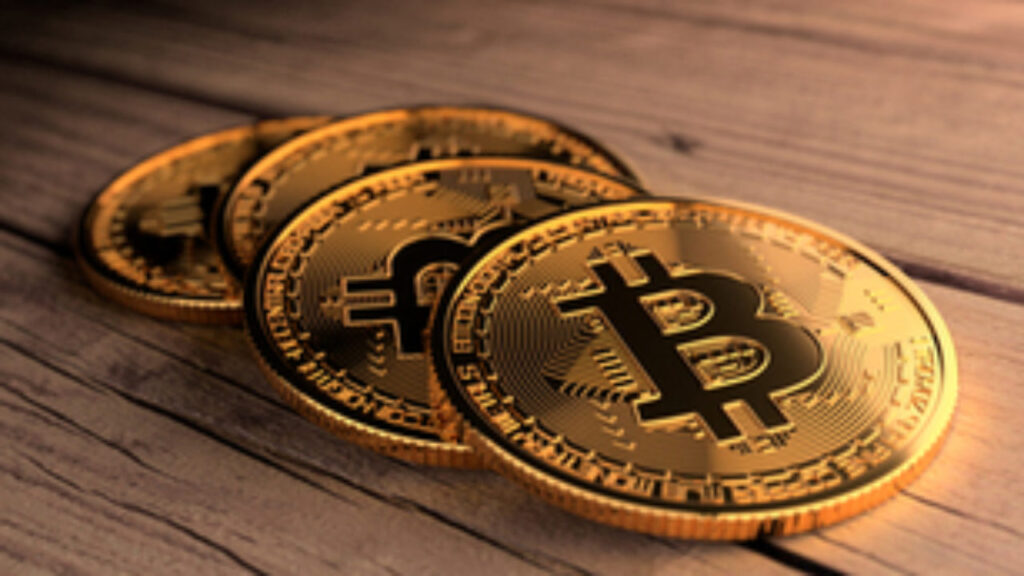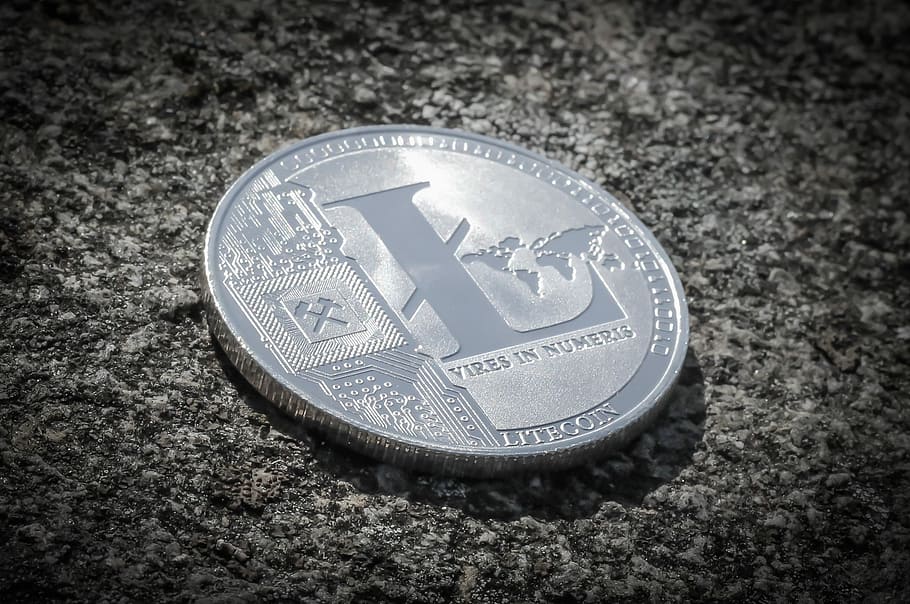Welcome, crypto newbies! The world of digital currencies can seem intimidating, but fear not! This guide is here to break it down for you in a fun and easy-to-understand way. Let’s dive into the exciting world of crypto!
Whether you’re a tech-savvy teen or a curious grandparent, this friendly breakdown will demystify the crypto universe. We’ll answer all your burning questions: what is crypto, why should you care, and how do you even get started without getting lost in the digital wilderness? Don’t worry, we’ll hold your hand (virtually, of course) as you navigate the exciting, and sometimes bumpy, crypto landscape.
So ditch the financial jargon and join the crypto revolution! This guide is your key to unlocking the potential of decentralized finance, empowering you to take control of your money and become a part of the future of finance. Let’s dive in!
What are Cryptocurrencies?
Imagine money that lives on the internet, not controlled by banks or governments. That’s basically what cryptocurrencies are. They’re digital assets built on blockchain technology, a fancy term for a secure, transparent network of computers that keeps track of all transactions. Think of it like a giant, shared ledger everyone can see.
Why should I care?
There are many reasons to get curious about crypto:
- It’s revolutionary: Crypto is changing the way we think about money and finance. It’s faster, cheaper, and more accessible than traditional systems;
- It’s empowering: With crypto, you have complete control over your money. No more middlemen telling you what to do with your hard-earned cash;
- It’s the future: Crypto is here to stay, and it’s constantly evolving. Getting started now could give you a head start in the future of finance.
What are some popular cryptos?
9 Best Cryptos For Beginners in 2024
The crypto world is full of different options, but here are a few beginner-friendly choices:
Bitcoin (BTC)

The OG of crypto, Bitcoin is the most valuable and well-established coin. It’s like the gold of the digital world.
Bitcoin, the first and most well-known cryptocurrency, has captured the world’s imagination since its mysterious birth in 2009. But is it merely a speculative bubble or a true revolution in the making? Let’s delve into its history, technology, and current standing to understand its potential.
Ultimately, Bitcoin is a complex phenomenon with both promising and controversial aspects. Understanding its history, technology, and market forces is crucial for making informed decisions about its place in your financial world.
Ethereum (ETH)
More than just a currency, Ethereum is a platform for building other cool things like apps and games. Think of it as the operating system for the crypto world.
Ethereum (ETH), often dubbed the “smart contract platform,” is more than just a cryptocurrency. It’s a multifaceted platform that’s paving the way for a decentralized future. Let’s explore its intriguing world:
Whether you’re a seasoned crypto enthusiast or a curious newcomer, Ethereum presents a fascinating case study in blockchain technology and its potential to reshape various industries. Understanding its core principles and ongoing developments can empower you to participate in this rapidly evolving space.
Litecoin (LTC)

A faster, cheaper version of Bitcoin, Litecoin is a good option for everyday transactions. Think of it as the silver to Bitcoin’s gold. Litecoin (LTC) often gets overshadowed by its bigger brother, Bitcoin. But delve deeper, and you’ll find a nimble cryptocurrency with unique advantages and a dedicated community. Let’s shed light on the “silver to Bitcoin’s gold”:
Ultimately, whether LTC fits your investment goals depends on your risk tolerance and preferences. It’s a strong contender for those seeking a faster, cheaper, and more stable crypto option for everyday use or diversifying their crypto portfolio.
Chainlink (LINK)
This crypto acts like a bridge between the real world and the blockchain, making it essential for many DeFi (decentralized finance) applications. Think of it as the translator for the crypto world.
Chainlink, often dubbed the “Oracle of the blockchain,” isn’t your typical cryptocurrency. It’s a groundbreaking platform that solves a crucial problem: connecting the secure world of blockchains with the messy, real-world data that fuels modern applications. Let’s unravel the magic behind LINK:
It’s a crucial piece of infrastructure powering the next generation of blockchain applications. Understanding its role in bridging the blockchain-reality gap opens doors to exciting possibilities across various industries. Whether you’re a tech enthusiast, investor, or simply curious about the future of decentralized technology, Chainlink deserves your attention.
Solana (SOL)

A more energy-efficient alternative to Ethereum, Cardano is known for its research-driven approach and focus on sustainability. Think of it as the eco-friendly option in the crypto world.
Solana claims the title of the fastest blockchain, capable of processing a staggering 65,000 transactions per second, compared to Bitcoin’s measly 5-7. This blazing speed comes courtesy of a unique blend of technologies:
Investing in SOL requires a balanced approach. Its high potential return is alluring, but the inherent risks associated with a young and evolving blockchain platform cannot be ignored. Thorough research and understanding of the technology and its challenges are crucial before making any investment decisions.
Whether you’re a tech enthusiast, a curious investor, or simply fascinated by the possibilities of blockchain technology, Solana’s speed, scalability, and thriving ecosystem deserve your attention. By diving deeper into its unique features and potential, you can make informed decisions about its place in your world.
BNB Coin (BNB)
Binance Coin (BNB) is a cryptocurrency associated with the Binance exchange. BNB was initially created as an ERC-20 token on the Ethereum blockchain but later migrated to Binance’s native blockchain, known as Binance Chain. The primary purpose of BNB is to facilitate transactions on the Binance exchange and pay for trading fees at a discounted rate.
Here are some key points about Binance Coin:
- Use on Binance Exchange: BNB was originally created to be used on the Binance exchange. Traders can use BNB to pay for trading fees, participate in token sales on the Binance Launchpad, and more;
- Binance Chain: Binance Coin migrated from the Ethereum blockchain to Binance Chain in 2019. Binance Chain is Binance’s own blockchain platform, designed to support fast and low-cost transactions;
- Decentralized Finance (DeFi): BNB has found use in various decentralized finance (DeFi) applications and projects built on the Binance Smart Chain, which is an evolution of Binance Chain;
- Token Burns: Binance periodically conducts token burns, where a portion of BNB is taken out of circulation by being sent to a burn address. This process is intended to reduce the total supply of BNB over time;
- Smart Contracts: With the introduction of the Binance Smart Chain, BNB has smart contract capabilities, allowing developers to create decentralized applications (DApps) on the Binance ecosystem;
- ICO Funding: BNB gained popularity during its initial coin offering (ICO) in 2017, where it was used to raise funds for the development of the Binance exchange.
It’s important to note that the cryptocurrency market is dynamic, and changes can occur rapidly. Therefore, it’s advisable to check the latest information from reliable sources for the most recent developments related to Binance Coin or any other cryptocurrency.
Polygon (MATIC)
Polygon (MATIC) is a cryptocurrency and a multichain scaling solution for Ethereum. Formerly known as Matic Network, Polygon aims to improve the scalability and user experience of decentralized applications (DApps) on the Ethereum blockchain. Here are some key points about Polygon:
- Scalability Solution: Polygon provides a framework for building multiple blockchains that are compatible with Ethereum. It is designed to address the scalability issues of the Ethereum network, offering faster and cheaper transactions;
- Layer 2 Scaling: It operates as a layer 2 scaling solution, allowing developers to create scalable and interoperable blockchain networks. This helps in offloading transactions from the main Ethereum chain to reduce congestion and lower transaction fees;
- Polygon PoS (Proof-of-Stake) Chain: Polygon uses a proof-of-stake consensus mechanism, which is more energy-efficient than the proof-of-work mechanism used by Ethereum. Validators on the network stake MATIC tokens to secure the network and validate transactions;
- MATIC Token: MATIC is the native cryptocurrency of the Polygon network. It is used for various purposes, including transaction fees, staking, and participating in the governance of the network;
- Polygon SDK: The Polygon SDK (Software Development Kit) allows developers to create custom blockchain networks with their own consensus mechanisms, interoperable with the Ethereum network. This flexibility attracts developers looking to deploy DApps with specific requirements;
- Interoperability: Polygon is designed to be interoperable with Ethereum, allowing seamless movement of assets and data between the two networks. This interoperability aims to provide a smooth experience for users and developers;
- Ecosystem Growth: Polygon has seen significant growth in its ecosystem, with many projects, DApps, and protocols choosing to build on its infrastructure due to its scalability features.
It’s important to note that the cryptocurrency space evolves rapidly, and there may have been developments or changes to Polygon since my last update. Therefore, it’s recommended to check the latest information from reliable sources for the most recent updates on Polygon (MATIC).
Avalanche (AVAX)

Avalanche (AVAX) is a cryptocurrency and a blockchain platform designed for decentralized applications (DApps) and custom blockchain networks. Avalanche aims to provide a highly scalable and customizable blockchain infrastructure. Here are some key features and aspects of Avalanche:
- Consensus Mechanism: Avalanche uses a unique consensus mechanism known as Avalanche Consensus, which is a variation of the classical consensus protocols. It achieves high throughput and low latency by allowing nodes to independently and concurrently choose the preferred state of the system;
- Three Subnets: Avalanche supports three primary subnets – the X-Chain, P-Chain, and C-Chain;
- X-Chain (Exchange Chain): This is the primary Avalanche platform for creating and trading custom digital assets. It is designed for the creation of new tokens and the transfer of assets;
- P-Chain (Platform Chain): This is the primary chain for validating and securing the network. It coordinates validators and manages the Avalanche platform’s core functionality;
- C-Chain (Contract Chain): This chain is designed for deploying and executing custom decentralized applications (DApps) and smart contracts
Customizable Blockchain Networks: Avalanche allows developers to create and customize their own blockchain networks (subnets) to suit specific use cases and requirements. This flexibility is intended to attract a wide range of applications and projects.
AVA Token: AVA is the native utility token of the Avalanche platform. It is used for various purposes, including transaction fees, staking for network security, and participating in governance through the Avalanche platform’s decentralized governance system.
It’s important to note that the cryptocurrency space is dynamic, and there may have been developments or changes to Avalanche since my last update. Therefore, it’s recommended to check the latest information from reliable sources for the most recent updates on Avalanche (AVAX).
Cardano (ADA)
Unlike the “gold rush” mentality surrounding some other cryptos, Cardano takes a methodical approach, aiming for long-term sustainability and scalability. Let’s explore what makes it unique:
Investing in ADA requires a different mindset than chasing quick gains. Cardano is a long-term play, aimed at creating a sustainable and impactful blockchain platform. If you believe in the power of sound research, innovative technology, and real-world application, then ADA might be worth considering for your portfolio.
Remember, crypto is volatile, so do your research and only invest what you can afford to lose.
Where do I buy crypto?
There are many crypto exchanges where you can buy and sell digital currencies. Some popular options include Coinbase, Binance, and Kraken. Just like choosing a bank, it’s important to research different exchanges and find one that’s reputable and secure.
Tips for beginners:
- Start small: Don’t jump in and invest all your savings. Dip your toes in with a small amount first to get comfortable;
- Do your research: Learn as much as you can about different cryptos before investing. There are tons of resources available online and in libraries;
- Diversify your portfolio: Don’t put all your eggs in one basket. Invest in a variety of different cryptos to spread out your risk;
- Be patient: The crypto market can be volatile, so don’t expect to get rich overnight. Hold your investments for the long term and don’t panic sell during dips;
- Have fun: Crypto can be a fascinating and rewarding journey. Enjoy learning about it and exploring the possibilities!
Remember, this is just the beginning of your crypto adventure! There’s so much more to discover in this exciting world. Keep learning, keep exploring, and most importantly, have fun!
Bonus: Check out these additional resources to learn more about crypto:
- CoinMarketCap: Track the price and market capitalization of different cryptos;
- CoinGecko: Get in-depth information about different crypto projects;
- Binance Academy: Learn about crypto from beginner to expert level;
- a16z Crypto: Read articles and essays about the future of crypto.
Conclusion
Now that you’re equipped with knowledge about the top 9 beginner-friendly cryptos, it’s time to jump into action! Research further, choose the coins that align with your goals, and invest wisely. Remember, this is just the beginning of your crypto journey. Stay informed, keep learning, and adapt your strategy as the market evolves. Embrace the potential of digital assets, and be a part of shaping the future of finance.
Don’t put all your eggs in one basket! Remember, diversification is key when navigating the dynamic world of crypto. Choose a few coins from this list that complement each other, considering their unique features and risk profiles. As you continue your crypto education, delve deeper into technical analysis, stay updated on industry news, and never stop learning. With dedication and smart investment choices, you can unlock the incredible potential of this revolutionary financial landscape.